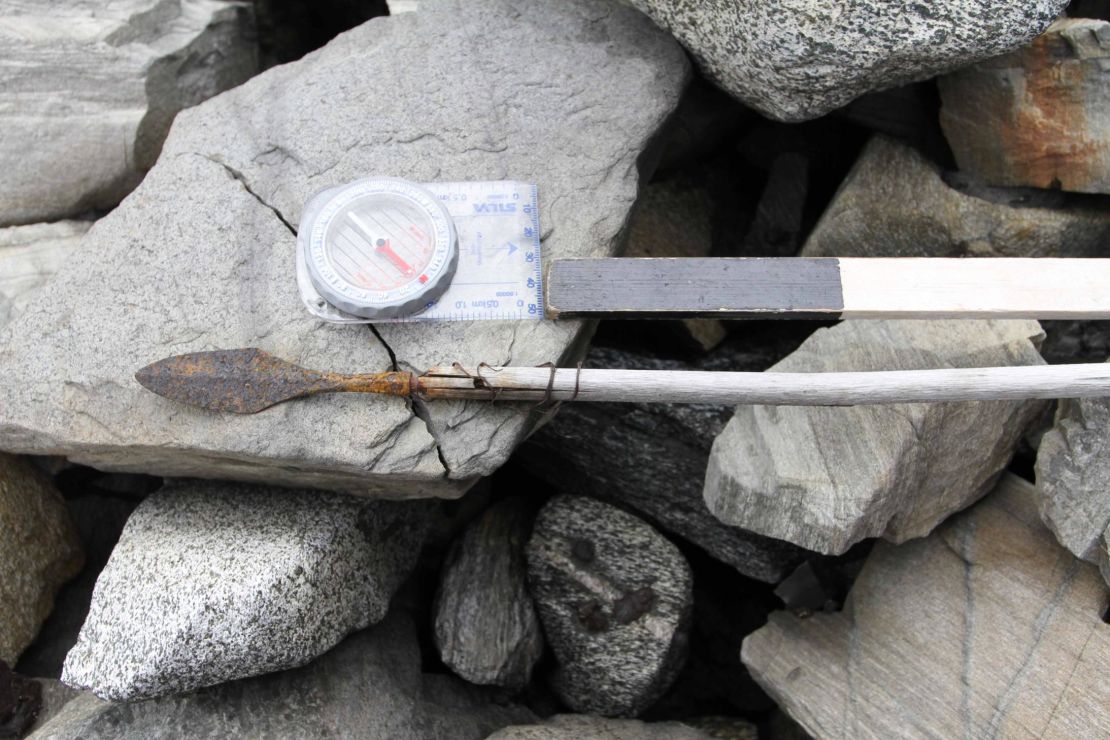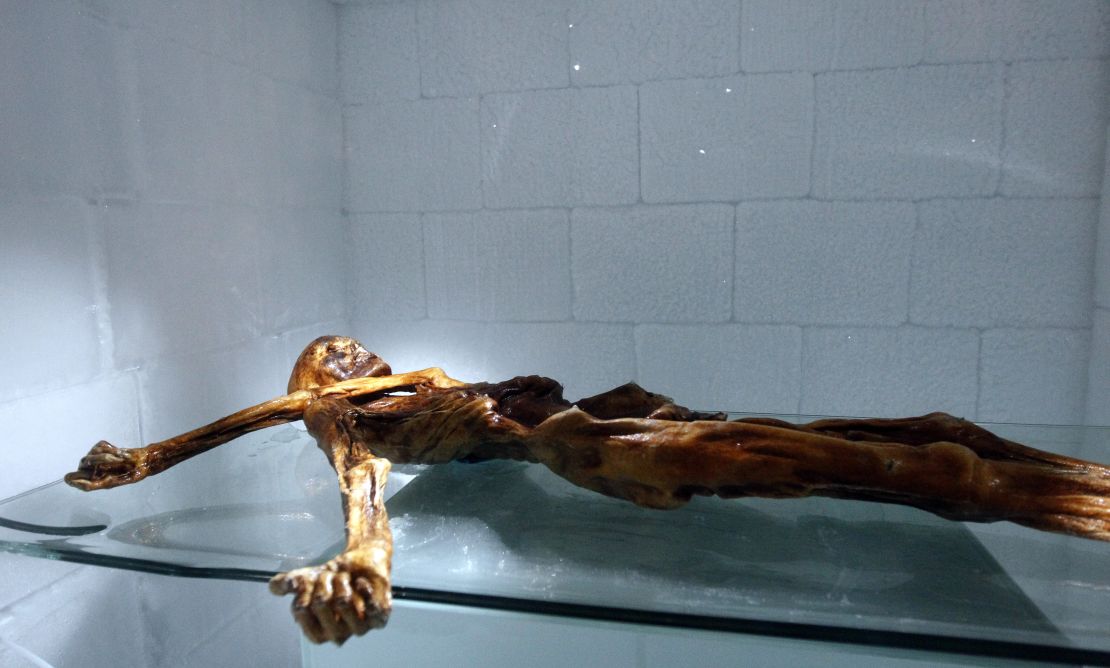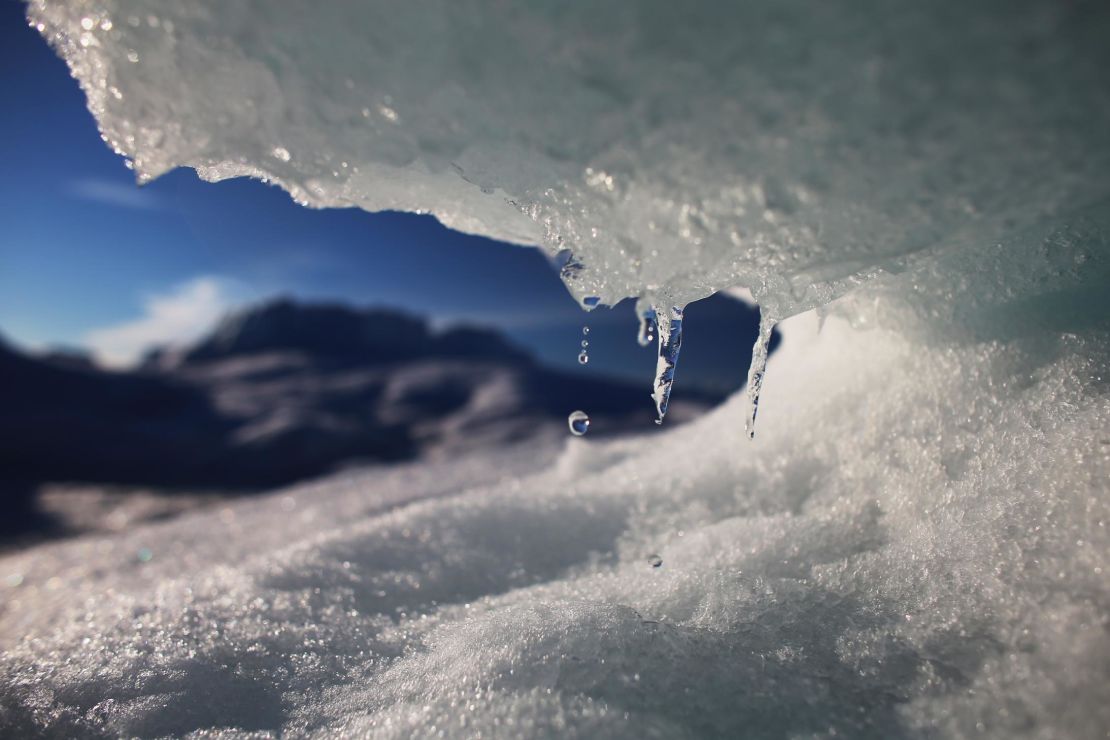Since the scorching hot summer of 2006, almost 3,000 archaeological artifacts have appeared from the melting ice in Oppland, Northern Norway. Among them, an Iron Age tunic, a 1,500-year-old arrow and a 3,400-year-old shoe.
Here, a a glacier archaeology program called Secrets of the Ice is documenting the finds being made on local ice patches – static or slow-moving ice fields that are ideal locations to find objects that were once lost in the snow.
Instead of having to dig like traditional archaeologists, Oppland’s archaeologists simply survey areas of the ice, looking out for artifacts that have thawed.
Many of Norway’s glaciers have experienced increased melting this century, caused by warmer temperatures. But whilst the changing climate is presenting archaeologists with exciting finds, it is also threatening to destroy ancient relics before archaeologists ever see them.
Secrets of the Ice
“Glaciers melt back at an alarming pace because of higher temperatures, less snow and more rain, and in doing so they expose archaeological finds that have been safely ice-covered for centuries or even millennia,” explained Vibeke Vandrup Martens, an archaeologist at the Norwegian Institute for Cultural Heritage Research.
Once an artifact is exposed to oxygen and sunlight, it will start to degrade, she said.

“At our sites we experience a rapid melting … and bits and pieces of human history melt out in reverse time order,” Lars Pilø, co-director of Secrets of the Ice, told CNN.
Among the program’s thousands of finds are a myriad of items that tell us how the region’s inhabitants dressed in tunics, hunted for reindeer and skied down the slopes.
Ice mummy
Pilø says the “ultimate find” would be an ice mummy, like Europe’s oldest known natural mummy, Ötzi the Iceman. The 5,300-year-old body was discovered in 1991 in the Alps on the border between Austria and Italy, and some scientists believe it emerged due to climate change.
Although Pilø thinks the chances of finding an ice mummy are slim, an “ice mummy kit” is kept in a local mountain center, to help excavate and transport a mummy – just in case.

But it is hard to predict how long precious items like another ice mummy will be preserved in their icy tombs. Professor Atle Nesje of the University of Bergen believes about 90% of the Norwegian glaciers may have melted away by the end of the century.
“Fieldwork will continue as long as there is ice left in the high mountains,” Pilø said. “I do feel a deep sense of foreboding doing this type of work.”
“There is definite urgency,” said Martens. “If the archaeologists do nothing, the artifacts and/or sites that belong to the whole community may be lost forever, without any recording they ever existed.”
“We are probably losing at least a couple of whole sites and at least 100 individual artifacts in Norway each year,” she continued. “We cannot afford, as a society to lose such parts of our common history.”
Warming Arctic
While melting ice is threatening artifacts locked in ice fields, climate change is presenting different problems in the Arctic Circle.
“The Arctic once offered fantastic preservation for archaeological remains, due to the cold climate,” said Jørgen Hollesen, a researcher at the National Museum of Denmark. “But over the last decades, the Arctic has been warming at twice the global average.”
Hollesen was one of the authors of a 2018 study that found there were around 180,000 registered archaeological sites in the Arctic. These date from the Stone Age to the medieval and more recent, and include the settlements, cemeteries, churches and fishing villages of Norse, European, Inuit and Sami people.
But the study warned that climate-related events are destroying a wide range of cultural sites there.
According to Martens, a co-author of the study, the main threats posed by climate change in the Arctic are from coastal erosion and landslides. “The permafrost is thawing and sea ice is melting, allowing waves and storms direct access to coastlines,” she said.

Some coastal archaeological sites in northern Alaska have already disappeared into the sea because of eroding coastlines, and rising sea levels and more frequent storms, are expected to make the problem worse.
“Each type of impact has different effects, causing damage at timescales varying from days to decades, or even centuries,” said Hollesan. “Consequently, some sites are in immediate danger and others are safe.”
In their paper, Hollesan and Martens say we need to develop ways of identifying and monitoring the most vulnerable sites, and that there must be more funding for programs to protect archaeology.
“Archaeological sites hold irreplaceable human and environmental records of the past, including both artifacts and environmental evidence,” said Hollesan. “The situation is urgent.”












